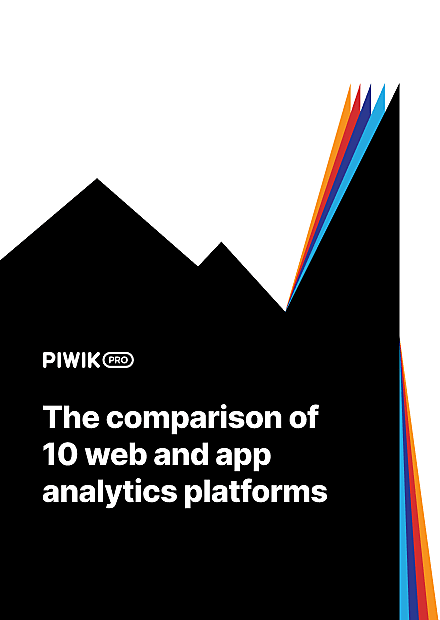Every time you release a new version of your software or add a feature to your app, your team gets pumped up. You’ve invested a lot of effort and resources to make your app shine, and you expect that customers will zealously adopt it from day one.
But there’s also uncertainty about how your customers will receive the update or addition, whether they will find it helpful, and how it will impact their experience with your product.
The hard truth is that users often ignore new features or are totally unaware they exist. To make things worse, companies lack insights into how customers use their product or whether they even use it at all. The fix? Measuring adoption.
Businesses that track product adoption achieve higher retention and lower churn. In the long run, this translates into more consistent revenue.
In today’s post, we’ll share a process for using product analytics to evaluate and improve the adoption of your product or feature.
What are product adoption and feature adoption and why they’re important
Product adoption describes the process when a person becomes aware of a product, starts to use it for its value and turns into the product’s recurring user. Product adoption is a vital aspect of achieving customer success and increasing revenue for your company, and should remain one of your most important business goals.
You also need to keep track of feature adoption, which is the situation when someone actively interacts with a particular feature within a product.
The process of adopting a product or feature involves various stages: awareness, interest, evaluation, trial and, in the end, adoption (or rejection).
Users are more likely to fully adopt a product or functionality if they recognize how useful it might be in achieving their goals. Also, the greater your users’ engagement, the bigger the chance they will discover new functions in your product.
The product adoption curve represents the stages when different customer segments are most likely to adopt your product. The 5 stages are:
- Innovators
- Early adopters
- Early majority
- Late majority
- Laggards
Though the early majority is typically the most prominent segment, each of the 5 stages is essential.
Higher adoption increases the likelihood of acquiring loyal, long-term users and customers. This is especially crucial for SaaS companies whose business model is subscription-based licensing with frequent renewals. We could even say that a SaaS business has to sell the same product to the same user every month.
But providing more benefits and making it easier for your customers to successfully renew their subscription every time is the path to boosting Customer Lifetime Value (CLV). Calculating CLV gives you a closer look at your business’ health in the long run. Including this metric in your analysis is useful for determining specific marketing goals and setting up sales strategies to lower acquisition costs and keep retention high.
Read more about CLV in our post:
Customer Lifetime Value: What Is It and Why Is It Important for Your Business
Retaining existing customers is much cheaper than acquiring new ones. As a study by Bain & Company tells us, lifting customer retention rates by just 5% increases profits by as much as 95%. And returning buyers spend about 67% more by the third year of their relationship with a business than in their first six months, according to Annexcloud. These factors all significantly impact your ROI.
That’s why you shouldn’t devote all your resources to finding new customers and learning about their behavior and preferences. As you add new features and make improvements, make sure you invest considerable time and money in keeping current customers happy and helping them continue to see the value of your product.
Apart from that, your customer success team should pay attention to any unused features and treat them as a red flag. People may find them hard to use or simply don’t see any value in them. For example, you may want to adjust what features you offer in different subscription models or packages so users don’t need to pay for a functionality or piece of software that is of little or no use to them.
That’s why it’s critical to monitor product adoption and keep tabs on feature adoption and establish a continuous improvement framework in your product development process.
Setting up and measuring adoption rate in product analytics
You know that product adoption rate is important. Now, it’s time to make sure that users get value from your product as quickly as possible.
To understand what adoption looks like for your product, you need to try to answer the following questions about your customers:
- What percentage of your user base is fully adopted?
- Which users tend to fully adopt the product and what characteristics do they have in common?
- How do people use your product, for what purposes and which features do they most often utilize?
- At which stage in the customer journey do users fully adopt the product and how long does it take them to do so?
- What path did the users go through to get to full product adoption?
Below, we guide you through ways to get data that will help you answer these questions, measure your product adoption rate and plan how to boost it.
1. Define your goal for product adoption
To check whether your app or functionality is being successfully and actively used, you need to first define what you want to achieve with it and how it helps your customers. Finally, determine how all that is linked to your organization’s business objective.
Every team needs to define adoption and it could consist of any number of specified actions performed by a user. For instance, if it’s a music app, adoption could be signing up, logging in, and listening to a song. Or following 5 favorite artists. For a collaboration platform, it could be uploading and downloading files, posting comments on documents, or filling out a calendar with tasks and reminders.
2. Pick dimensions
This step involves measuring feature or product usage. Knowing whether it’s used or not isn’t enough – you need to get a wider perspective. You should focus on three dimensions:
- Time to adopt – How much time does it take for customers to start using a product or new feature?
- Breadth of adoption – How many people in your client base or segment actively use the product or feature?
- Duration of adoption – How long do people keep using the product or feature after adopting it?
3. Select metrics to track
You can’t estimate whether adoption is high or low based on your intuition. Instead, focus on metrics that help you assess if the adoption is fulfilling your expectations or falling short of them.
The perspective you take depends on your company’s profile. Maybe you’ll track account creation? First completed transaction? The number of people using a new function in your app?
You can also apply some common metrics as your baseline, namely:
- Adoption rate – the percentage of new, active users of a product or feature
- Conversion rate – the percentage of users who convert, such as visitors who become customers or free users who turn to paid ones
- Percentage of users who performed a key action for the first time
- Time to first key action – how much time a new user needs to try an important existing feature or how much time an existing user needs to try a new feature
- Usage frequency – the percentage of users accessing the product or feature within a given period
- Total number of times people have used the product or feature
The rest depends on you.
Think about the main purpose of your app and what kind of user flow you expect people to follow. Break down the flow into smaller actions you want clients to take to get the most out of your product and use this to identify more metrics.

COMPARISON
The comparison of 10 web and app analytics platforms
Learn the key differences between Piwik PRO Enterprise, Google Analytics 4, Matomo Cloud, Adobe Analytics, AT Internet, Countly Enterprise, Mixpanel Enterprise, Amplitude Enterprise, Snowplow Enterprise, and Heap Premier.
4. Devise your tracking plan
Like with most analytics strategies, you need to have a solid foundation and structured process. This is where a tracking plan comes in handy. A simple spreadsheet should do the job of gathering in one place all available information about events and actions performed within your product.
The tracking plan should cover:
- the events you want to track
- explanations of why these events are needed
- unified naming conventions for events and funnels
- event triggers
- steps in the funnel
- properties and values for events
- software required
- implementation schedule
If you want to get more details on our strategy for drafting a tracking plan, check out this post:
Analytics Implementation in 12 Steps: An Exhaustive Guide (Tracking Plan Included!)
5. Analyze the stickiest feature
Many product teams closely investigate sticky features – ones that pique users’ interest by providing consistent value and being so gripping that they use them regularly. They’re often the ones that generate the biggest ROI.
The parts of your app or software that users stick to the most are difficult to replace. At the same time, they’re usually complex and adopting them requires more effort and time from users. However, users who can manage to become adept at the more intricate and valuable features of your product won’t churn so easily. They are also more frequently ready to increase their subscriptions or purchase your other offerings.
6. Look for usage patterns within the product
As you go through your analytics data, it’s vital to find patterns of product or feature usage. They highlight when your clients interact with your product most actively, what their most common use cases are and how often they use the given features.
You can also analyze user flows through your product, including finding out the steps users typically take before adopting the product and the stage they are at in their journey when they fully adopt it.
7. Track product adoption across different user segments
One way to get deep knowledge about your product usage is by comparing different user segments.
You can then learn about the type of users that tend to fully adopt the product and whether they share any characteristics.
Consider dividing them up by subscription plans to get a more detailed picture. You can segment customers based on tiers like Standard, Premium, and Enterprise, and analyze adoption rates in each of them.
If you have a streaming service like Netflix, you can learn if subscribers with the Premium plan tend to watch the same shows, whether they share a batch of favorite episodes, or when they add items to their watch list.
With all that knowledge you’ll be able to tailor your product to your users’ behaviors in the next update and execute effective, more targeted marketing campaigns.
Best practices to boost product and feature adoption
Equipped with precise information on the adoption rate, you’ll be able to review your product and tactics. It will be easier to design a new development strategy, decide what features to keep, and set directions for improvements and fixes.
Announce new product or app features
In your effort to draw customers to new features, you’ve got to make sure they know about them in the first place. The announcement process should be at the top of your agenda when you develop or update your product.
Use all your channels: blog, in-app messages, newsletters, and social media. Keep in mind that not every feature is equally important to all users. Tailor notifications to custom user segments so they’re always relevant.
Establish an individual approach to every user
You can track even the fanciest metrics but you won’t see results if you measure adoption for all customers at once. Our customer success team advises you to prioritize treating clients individually. This means you need to calculate the adoption rate for a particular individual.
That significantly impacts the whole process and lets you determine whether and how engaged and advanced your users are.
Set up adoption goals
Once you know what works and what doesn’t, you can take your strategy to another level by setting adoption objectives for key features, the ones that boost income. Your strategy can be built around customer satisfaction. By measuring whether you’re reaching a certain threshold or not, you’ll have a better idea of what your product’s chances of success are.
Include customer feedback in your product updates
Even the biggest collection of analytics data and KPIs will never be enough to fully understand how and why people adopt a feature. That’s why you should reach out to your clients and learn first-hand from them about what’s missing or broken in your product. This feedback will have an invaluable impact on your next upgrade.
Help customers get the most out of your product
One of the key issues you should focus on while working towards improving adoption is educating clients on your product and its new features. Make sure to clarify the benefits they bring, explain how they will solve your customers’ problems, and communicate new use cases. There are lots of ways to do that, like:
- 1-on-1 with clients
- automatic emails
- in-app messaging
- step-by-step walkthroughs
- case studies
- webinars
- help center
- community forum
Minimize friction during the adoption process
When it comes to the adoption of new products and features, there is a serious obstacle that marketers and customer success teams must overcome. That obstacle is resistance. Learning new things, whether a workflow, a habit or an interface, requires effort and generates friction.
First, know what actions users must take to employ the new feature successfully. Then, by using analytics and examining onboarding funnels, conducting UX surveys and in-depth interviews to gather client feedback, you’ll know where and why people get stuck.
To ease the learning process, stick to universal design conventions that people are familiar with. Make sure you’ve got navigation menus, an intuitive interface, and a customer help center in place. Anything that can help in using a new product without going through a longish tutorial will do the job.
Take a closer look at churns and renewals
You can gather great insights from clients who have stopped doing business with you. Analyzing data throughout their relationship with your brand helps you discover what pushed them to churn. In the same way, information gathered from clients who renew their subscriptions tells you what makes them stay and what sparks them to make additional purchases.
Test and experiment with your product
There can be different factors hampering adoption. Often these are technical issues like login errors. But they could be UI problems, like inconsistency when your users have expectations about how they can access something or what it should look like, but they run into something completely different.
Your task is to verify and test your product before rollout. Also, experiment with different versions of functionalities, and check what solutions work better in terms of UX and UI. As you find what fits, prioritize it and include it in your new release. The faster you discover what’s missing or what damages the customer experience, the bigger your chances of getting them to embrace your product enthusiastically.
Tracking and improving product adoption – final thoughts
To maintain a strong position in today’s competitive software market, organizations need to tap into all possible resources that let them create sharper, more engaging products. Measuring adoption fits into this strategy as it gives you insights into how fast customers begin using a feature. You’ll learn whether your product helps them reach their goals. And if it does, they will stick with your brand for longer.
Don’t miss these resources that dive deeper into product analytics:










